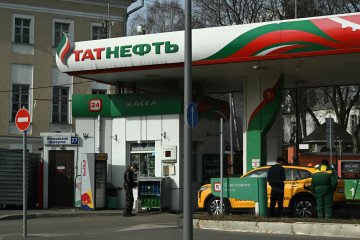- Category
- Latest news
Russia Remains Key Energy Supplier to Europe Despite Market Losses, Bloomberg Reports

According to Bloomberg, Russia remains a significant supplier of energy to Europe despite losing ground in the European market. In 2023, Russia provided around 15% of the European Union’s gas imports, trailing behind Norway, which accounted for 30%, and the US with 19%.
As of late 2023, Russian fossil fuel imports to the EU were valued at approximately $1 billion per month, down from a peak of $16 billion per month in early 2022, according to data from the European Commission.
Most Russian gas is delivered to Europe via pipelines passing through Ukraine and Turkey. Austria, Slovakia, and Hungary are among the largest consumers. Meanwhile, countries such as Spain, France, Belgium, and the Netherlands continue to import Russian liquefied natural gas (LNG) by tanker. Some of this LNG is mixed with other gas supplies in the European network, meaning it could indirectly reach countries like Germany, despite pledges to cut reliance on Russian gas.
However, Norway has overtaken Russia as the leading supplier of pipeline gas to the continent. The US has also become Europe’s top supplier of LNG.
Earlier, EU Energy Commissioner Kadri Simson emphasized that Russia’s share of the European gas market had significantly declined since the full-scale war in Ukraine began. Simson noted the EU’s commitment to completely phasing out Russian energy imports in the near future.
While some European countries, such as the UK, Germany, and the Baltic states, have already ceased importing Russian gas, others remain reliant due to long-term contracts. Transitioning away from Russian energy may be costly, particularly as global gas supplies are expected to remain tight until new exports from nations like the US and Qatar become available over the next two years.
European customers are also facing challenges in securing alternative supplies as demand grows from countries that have phased out coal and nuclear power plants in recent years.




-72b63a4e0c8c475ad81fe3eed3f63729.jpeg)


